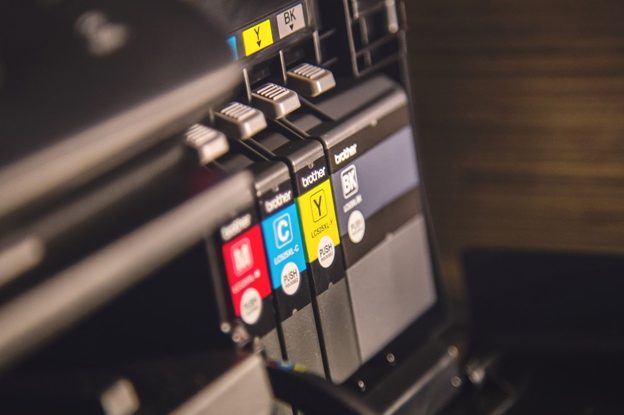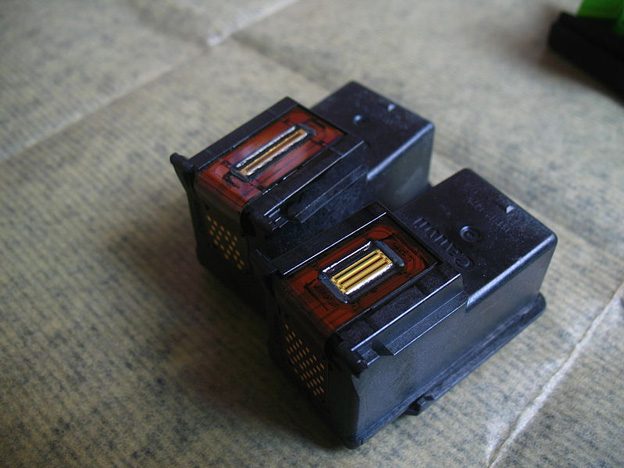Free 2nd Day Shipping on orders above $50.
Free 2nd Day Shipping on orders above $50.
Ink cartridges for printers are delicate products that need careful handling when being installed, used, and stored. In this blog, we will show you how to properly store your ink cartridges when they are not in use. Whether you’re stocking up spare ink cartridges or keeping used ones, we will provide tips to take care of of each of your cartridge while they are not in service.

Photo Credit: pxhere
Ink cartridges can add up to unnecessary expenses when they are not taken care of properly. Moreover, the inconvenience of purchasing a printer cartridge when you need one ASAP can be too much of a hassle. With that, having a good practice on how to properly store printer ink is essential, and can lessen unnecessary costs for your printing expenses.
When you will not be printing for a long time, it is best to remove the cartridges from the printer and store them in a sealed, airtight container. Doing this will need extra precautions because improper storage can instead destroy the cartridges.

Photo Credit: Wikimedia Commons
Ideally, the best way of keeping a cartridge that’s already used at top printing conditions is to keep them in the printer and print with them regularly. However, that is not the case for everyone, and you might not need printing for quite some time.
Below are tips for storing open ink cartridges:
When you plan to store an unopened ink cartridge, make sure you have airtight storage for it. Doing so will prevent your inkjet cartridge from drying up. It also keeps the printhead of the cartridge to be moist as intended. A dried printhead can cause clogging, which may be detrimental to your ink cartridge.
Take note, we recommend you use airtight containers that can keep your ink cartridge from moisture. Yes, resealable plastic bags are airtight containers, but using them can cause damage to the printhead as it can touch and rub against the printhead.
To keep the air inside the container moist, place a damp container inside as well. Do NOT place damp tissue or cloth ON the printhead, as this may cause damage as well.
When storing ink cartridges, make sure you place them in a container with their nozzles facing up. This method prevents ink inside the cartridge from leaking. For multi-colored ink cartridges, storing them upright also prevents the different colored inks from mixing.
Place your ink cartridge containers in an area where there is no direct sunlight or other light sources. Sunlight can ruin ink quality and discolor them, plus the heat can make ink inside the cartridge boil and leak. Make sure you keep your ink cartridges in areas not above the average room temperature.
When it’s time to use your stored ink cartridges, here are the steps to prepare them before use:
This may be common sense, but as a reminder: It is best to keep your cartridges unopened unless they are to be used. The original sealed packaging of cartridges is designed to keep it away from air, light, and dust.
Please don not store opened ink. The opened ink cartridges can be exposed to air, sunlight, and dust and small particles.
Always keep unopened ink cartridges in storage areas with cool temperatures and away from sunlight. Take note of the manufacturer’s expiry date as well as they cannot ensure you good printing quality for cartridges past their shelf life.
Contrary to popular knowledge, keeping ink cartridges in the fridge can bring more harm than good to the cartridges. You may think that the fridge is a good place to store your cartridge as it is cool. However, refrigerators are generally dry environments. In the first place, a sealed container for ink cartridges may not also fit in the fridge anyway. So never store toner cartridges and office ink cartridges inside the refrigerator.
Printer Ink cartridges typically last for about two years unopened and not in use, but other compatible and remanufactured ink cartridges have a shelf life of up to three (3) years. This is long enough for you to consume the ink in the cartridge before it expires. Make sure you check your ink cartridge for the indicated expiry date after taking it our from storage.
When printers are not used for a long time, you may encounter issues once you print with them again. Here are the common problems you may get into:
To learn more about ink cartridges and printing, take a look at our blogs:
Storing ink cartridges, if done properly, can make ink cartridges last long up to their lifetime. This may be helpful for you if you use printing on occasion: No more throwing dried cartridges and purchasing new ones.
Nevertheless, with all proper care, storage, and safekeeping for ink cartridges, don’t forget to look into the best printer ink quality as well. For low-quality printer inks and toners, there are no storage and troubleshooting tips to fix what’s already broken; make sure you get high-quality ink and toner cartridge supplies from reputable ink suppliers like YoyoInk. Doing so will ensure that your cartridges are still in good condition even if you store them for a year or two.